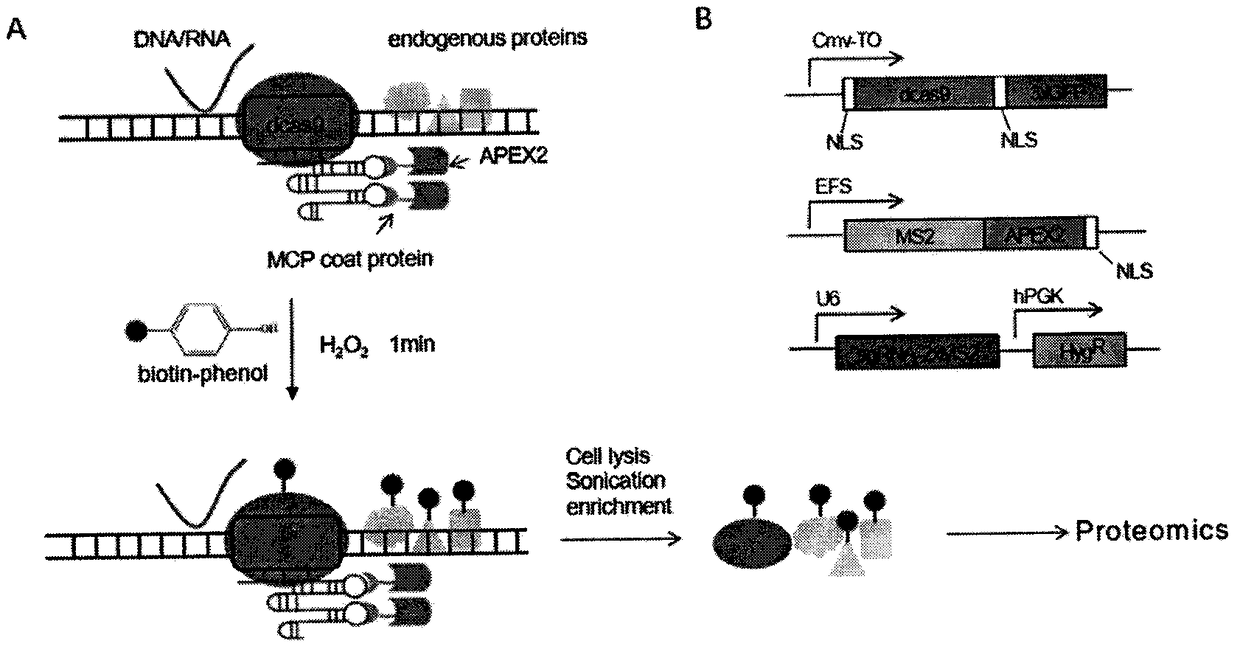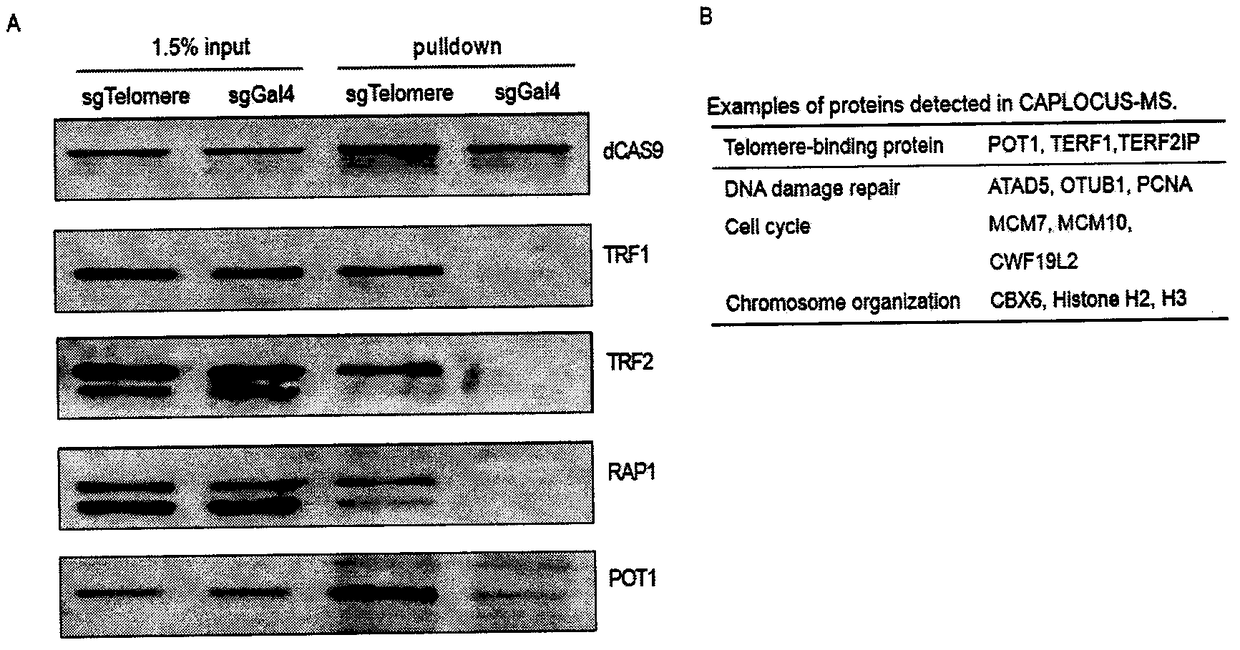Method for identifying and analyzing specific locus interaction proteins on basis of CRISPR/cas9 and peroxidase APEX2 system
A technology of peroxidase and system identification, which is applied in the analysis of materials, biological tests, material inspection products, etc., can solve the problems of not being able to provide specific analysis of chromatin or genome-wide functions, changing the natural environment of chromatin, technical difficulties, etc. problems, to achieve high specificity, high sensitivity, and good reproducibility
- Summary
- Abstract
- Description
- Claims
- Application Information
AI Technical Summary
Problems solved by technology
Method used
Image
Examples
Embodiment 1
[0032] Embodiment 1, construction and transfection of plasmid expression vector
[0033] 1.1 Construction of the plasmid expression vector: In order to construct the MS2-APEX2_NLS fusion protein expression vector, APEX2 was amplified from the pcDNA3 Connexin43-GFP-APEX2 (Addgene plasmid: 49385) plasmid by PCR, and then digested with BamHIandXhoI. Cloned to the pHAGE-EFS-MCP-3XBFPnls (Addgene plasma: 75384) vector, by connecting the annealed oligonucleotide fragment (oligos) and the BbsI restriction site to pLH-sgRNA1-2XMS2 (Addgene plasma : 75389) plasmid to complete the construction of sgRNA expression vector, express dCas9 with Addgene plasmid 64107, all sgRNA sequences are shown in Table 1:
[0034] Table 1. sgRNA sequences
[0035] name
Sequence(5'-3')
sgRNA-Telomere
TAGGGTTAGGGTTAGGGTTA
sgRNA-Gal4
AACGACTAGTTAGGCGTGTA
[0036] 1.2 HEK293T cell culture: HEK293T cells in 5% CO 2 and cultured in a 37°C incubator, the medium was high...
Embodiment 2
[0038] Embodiment 2, extract protein and carry out Western blot (Western blot) analysis experiment
[0039] 2.1 After 24 hours of cell transfection, when 4x10 7 When each cell was transfected with the target sgRNA or Gal4 control, the cells were treated with 500uM biotin-phenol (Iris Biotech GmbH, Germany) for 30min, and then hydrogen peroxide (H 2 o 2 ) to a final concentration of 1 mM and treat the cells for 1 min. Immediately thereafter, a reaction termination solution (10 mM sodium azide, 10 mM VC, 5 mM Trolox) was added to terminate the reaction. Harvest cells directly after terminating the oxidation reaction;
[0040] 2.2 Resuspend the cells with hypotonic buffer and lyse for 15 minutes. Centrifuge at 13000g for 10min at 4°C;
[0041] 2.3 Pre-cooled lysis buffer (50mM Tris, 150mM NaCl, 0.2% NP-40, 5% glycerol, 1.5mM MgCl 2 )Resuspended;
[0042] 2.4 Sonicate the resuspended solution (Diagenode Bioruptor, High, 10min, 30son, 30soff);
[0043] 2.5 The cell extract ...
Embodiment 3
[0049] Embodiment 3, SILAC (stable isotope labeling) analysis experiment
[0050] 3.1 Plate HEK293T cells into two T25 culture flasks, culture the cells with SILAC medium, the cells can absorb lysine and arginine or heavy or light isotopes into the cells through metabolism, and synthesize the proteome of the cells ;
[0051] 3.2 After culturing the cells for 8-10 days, check the labeling efficiency. Pick positive cells and expand them into T75 culture flasks;
[0052] 3.3 Transfect dcas9, MS2-APEX2_NLS, and sgRNA at the site of interest into heavy isotope-labeled cells, and transfect dcas9, MS2-APEX2_NLS, and sgRNA Gal4 into light isotope-labeled cells;
[0053] 3.4 24 hours after transfection, the light and heavy cell lines were labeled with biotin respectively. The method of cell lysis and interruption is the same as that in Example 2. Mix equal amounts of protein (2mg each) for the two treatments, then mix it with 100ul of M-280 streptavidin magnetic beads, and incubate...
PUM
 Login to View More
Login to View More Abstract
Description
Claims
Application Information
 Login to View More
Login to View More - R&D
- Intellectual Property
- Life Sciences
- Materials
- Tech Scout
- Unparalleled Data Quality
- Higher Quality Content
- 60% Fewer Hallucinations
Browse by: Latest US Patents, China's latest patents, Technical Efficacy Thesaurus, Application Domain, Technology Topic, Popular Technical Reports.
© 2025 PatSnap. All rights reserved.Legal|Privacy policy|Modern Slavery Act Transparency Statement|Sitemap|About US| Contact US: help@patsnap.com


